India Flag Meaning
Three horizontal stripes of saffron, white, and green with a navy blue Ashoka Chakra (24-spoke wheel) in the center, representing courage and sacrifice, peace and truth, faith and fertility, and the eternal wheel of law in Indian philosophy.
- Continent
- Asia
- Adopted
- 1947
- Ratio
- 2:3
- Colors
- saffron, white, green, blue
- Designer
- Pingali Venkayya

Symbolism
Saffron Stripe: Represents courage, sacrifice, and renunciation, symbolizing the strength and bravery of the Indian people, the selfless spirit of Indian leaders, and the nation's commitment to higher ideals over material pursuits.
White Stripe: Represents peace, truth, and purity, symbolizing the path of truth that India seeks to follow, the peaceful nature of Indian philosophy, and the pure intentions of the diverse Indian nation.
Green Stripe: Represents faith, fertility, and prosperity, symbolizing the agricultural abundance of the Indian subcontinent, the faith of the Indian people, and the country's rich natural heritage and growth.
Ashoka Chakra: The 24-spoke navy blue wheel represents the eternal wheel of law (dharma) from Buddhist and Hindu philosophy, symbolizing progress, justice, and the continuous movement of life, based on the wheel at Sarnath's Ashoka pillar.
History
- 1906: The first version of an Indian flag was hoisted in Calcutta with horizontal stripes of yellow, red, and green, and symbols including the sun, moon, and star, marking early expressions of Indian nationalism.
- 1921: Mahatma Gandhi suggested modifications to Pingali Venkayya's design, creating a flag with white, green, and red stripes and a spinning wheel (charkha), symbolizing self-reliance and non-violent resistance.
- 1931: The Indian National Congress adopted a tricolor flag with saffron, white, and green stripes and a blue spinning wheel, establishing the basic design that would become the national flag.
- August 15, 1947: India gained independence from British rule, and the Constituent Assembly adopted the current flag design, replacing the spinning wheel with the Ashoka Chakra to represent the new republic.
- January 26, 1950: India became a republic with the adoption of its Constitution, confirming the tricolor as the national flag of the Republic of India and establishing the democratic principles it represents.
- 1947-Present: The flag has represented India through partition, wars, economic liberalization, and its emergence as a major global power and the world's largest democracy.
Trivia
- India's flag represents the world's largest democracy, with over 900 million eligible voters participating in elections that are often called the world's largest democratic exercise.
- The flag flies over a country with 22 official languages and hundreds of dialects, making India one of the most linguistically diverse nations in the world.
- India is the world's largest film producer, with Bollywood and regional cinema industries producing more movies annually than Hollywood under this flag.
- The flag represents the birthplace of four major world religions: Hinduism, Buddhism, Jainism, and Sikhism, making it a significant spiritual center.
- India has more UNESCO World Heritage Sites than almost any other country, including the Taj Mahal, one of the New Seven Wonders of the World.
- The flag flies over a country that is home to nearly 18% of the world's population, making it the most populous nation on Earth as of 2023.
- India's space program, represented by this flag, has achieved remarkable feats including Mars missions and lunar landings at a fraction of other countries' costs.
- The flag represents a country with the world's largest postal network, connecting remote villages to major cities across the vast subcontinent.
- India is the world's largest producer of spices, tea, and pulses, with agriculture employing nearly half the population under this flag.
- The flag flies over Silicon Valley's largest source of tech talent, with Indians founding or co-founding major companies like Google, Microsoft CEO positions, and numerous startups.
- India's railway system is one of the world's largest employers, with over 1.3 million employees operating trains that carry 8 billion passengers annually.
- The flag represents a country where chess was invented (as Chaturanga), along with many mathematical concepts including the number zero and decimal system.
- India has the world's largest vegetarian population, with an estimated 400 million people following vegetarian diets for religious, cultural, or personal reasons.
- The flag flies over a country that celebrates more festivals than any other nation, reflecting its incredible cultural and religious diversity.
- India's IT services industry, represented by this flag, serves clients worldwide and has made cities like Bangalore and Hyderabad global technology hubs.
Related Countries
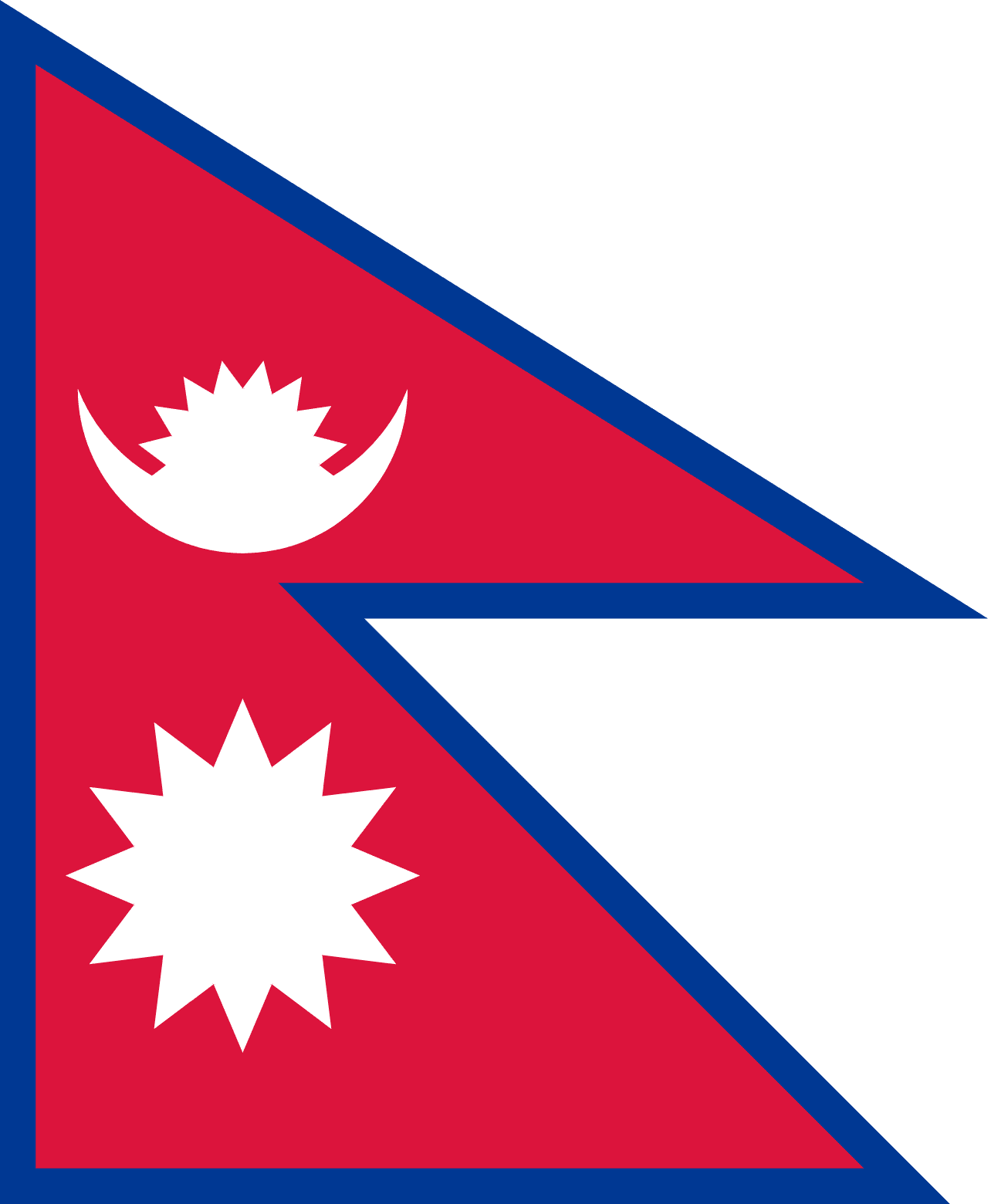
Nepal
Asia
The only national flag that is non-rectangular, composed of two stacked crimson pennons with blue borders, featuring a white moon and a white sun. It reflects Nepal’s distinct identity, culture, and Hindu-Buddhist traditions.

Bangladesh
Asia
A dark green field with a red circle positioned slightly toward the hoist side, representing the lush Bengali landscape and the sun rising over Bengal, as well as the blood shed during the Liberation War of 1971 and the new dawn of independence.
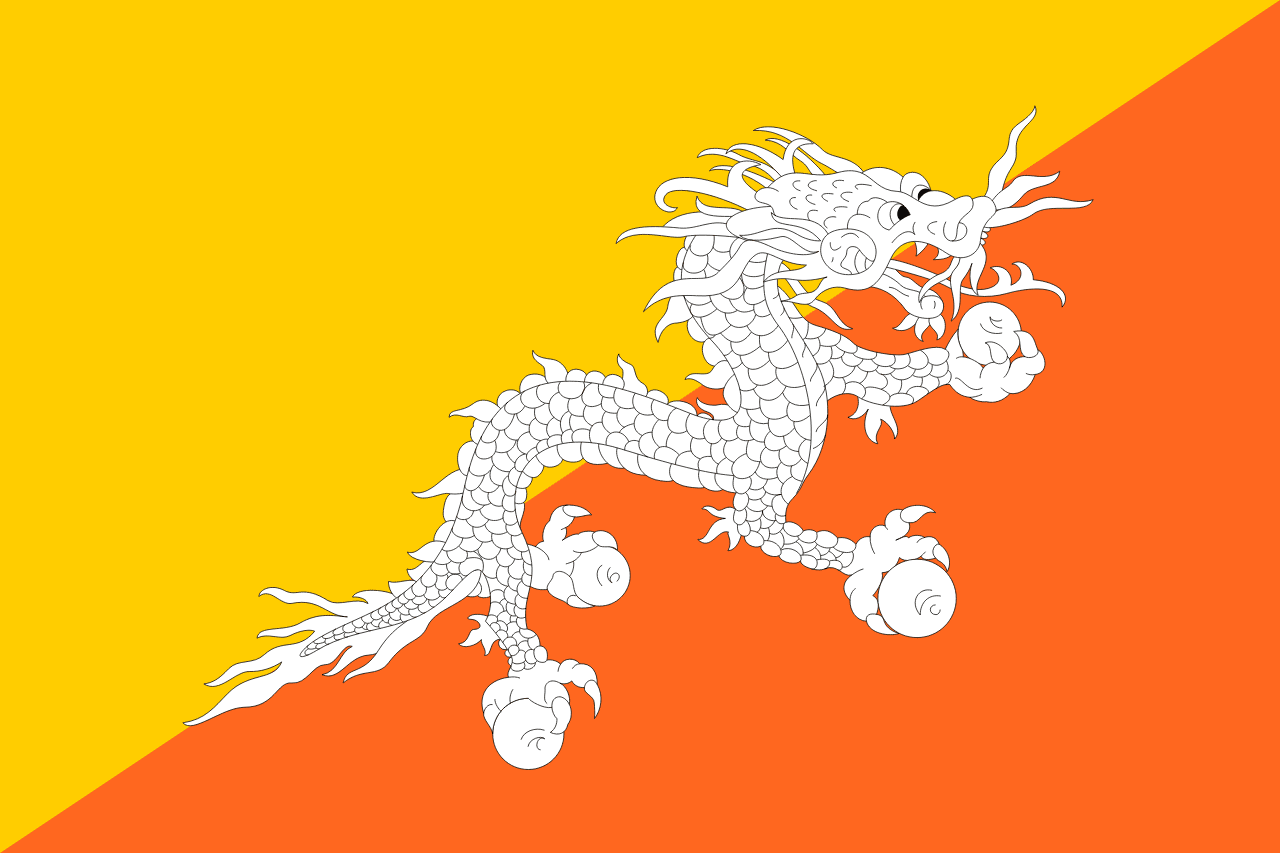
Bhutan
Asia
Divided diagonally with orange in the upper triangle and yellow in the lower triangle, featuring a white dragon (Druk) in the center holding jewels in its claws, representing the spiritual and temporal power of Bhutan and the Thunder Dragon that gives the country its name 'Land of the Thunder Dragon.'
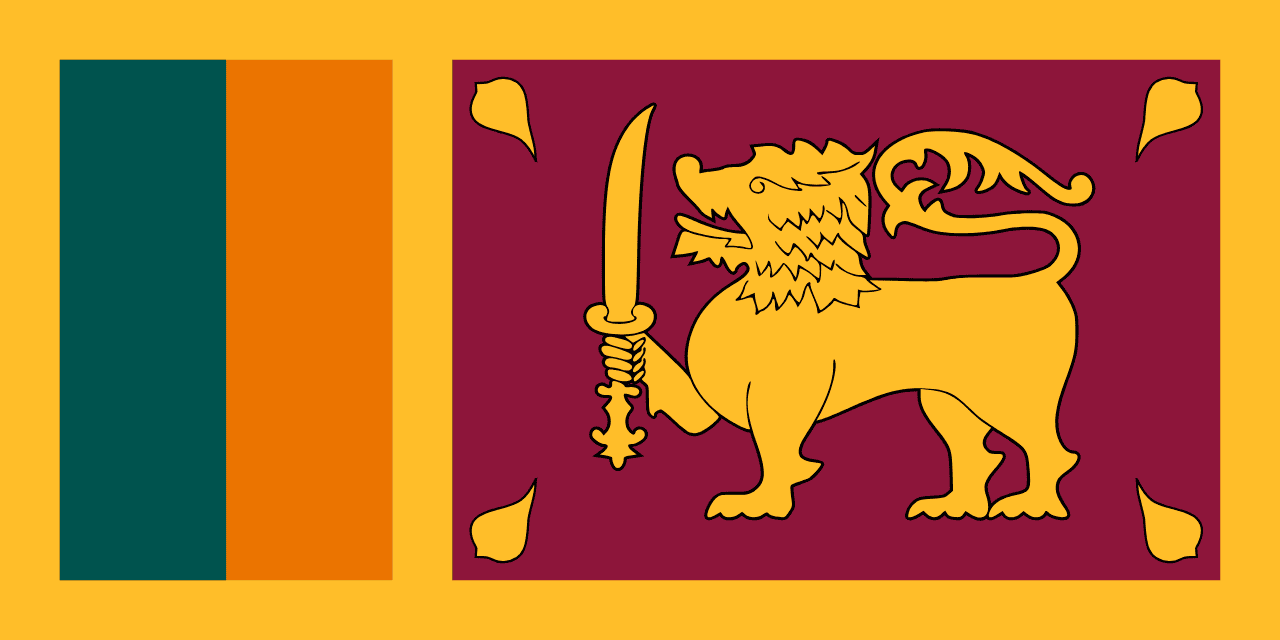
Sri Lanka
Asia
A maroon field with a golden lion holding a sword, surrounded by four golden bo leaves, with vertical stripes of orange and green on the hoist side, representing the Sinhalese majority, Tamil and Muslim minorities, Buddhism, and the courage and strength of the Sri Lankan people.
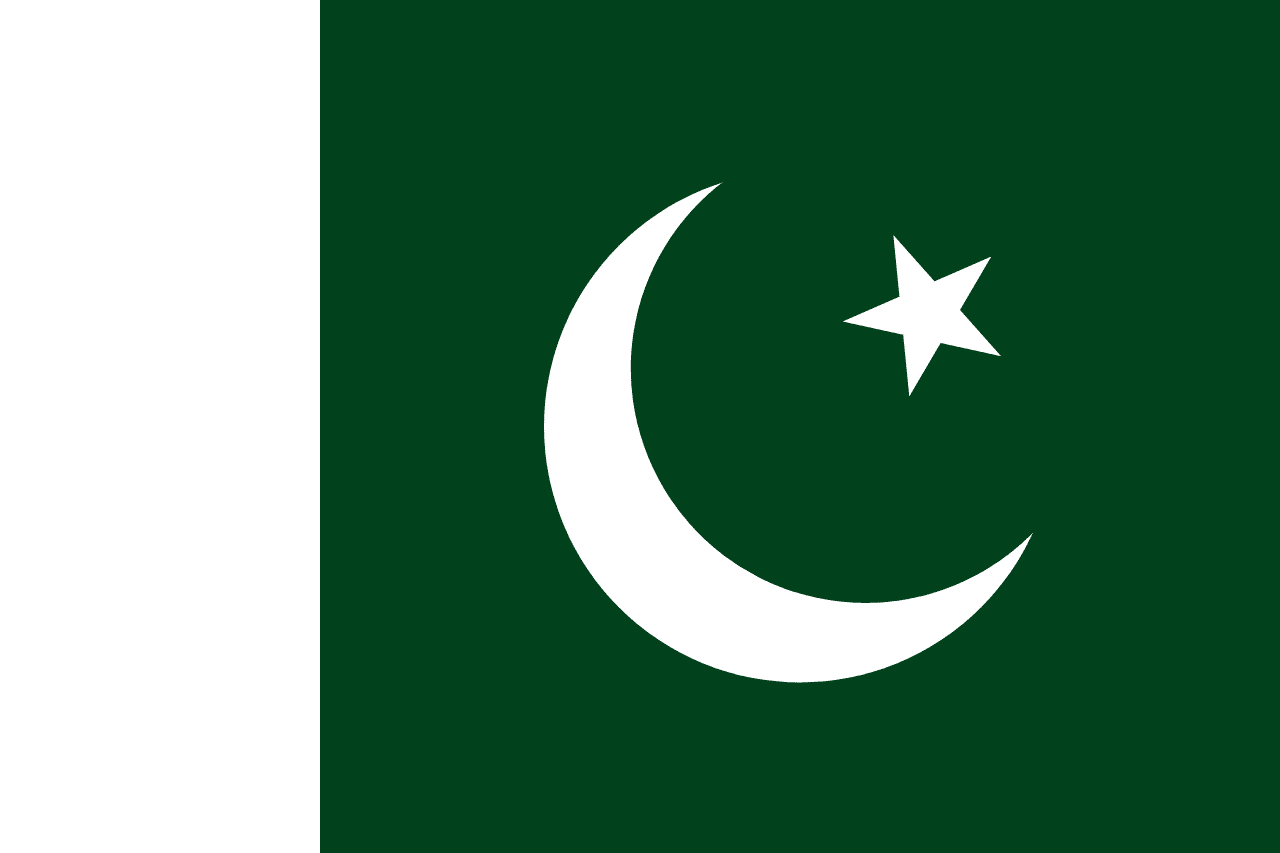
Pakistan
Asia
A green field with a white vertical stripe at the hoist, a white crescent, and a five-pointed star. The flag symbolizes Islam, religious minorities, and the guiding ideals of the nation.
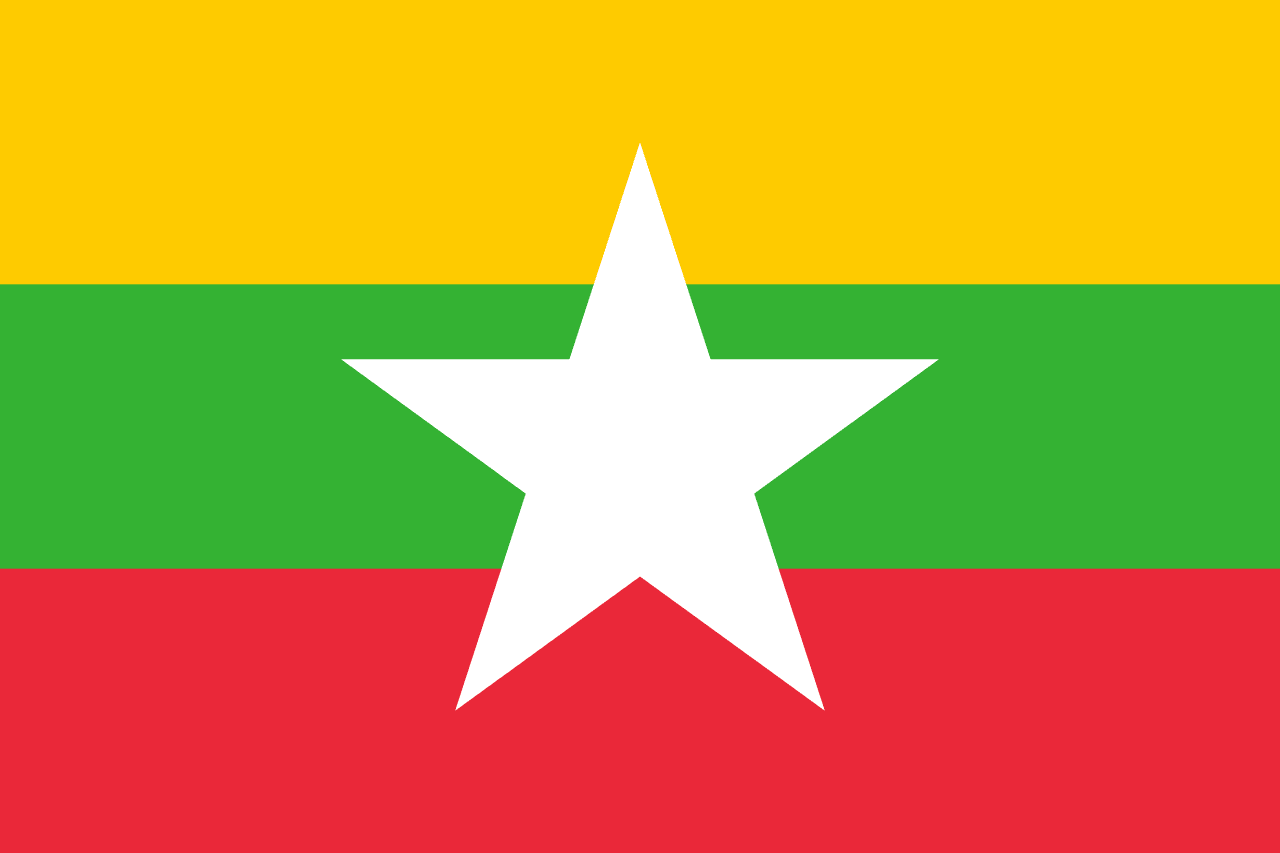
Myanmar
Asia
A horizontal tricolor of yellow, green, and red with a large white five-pointed star in the center. Adopted in 2010, the flag symbolizes unity and a new era for Myanmar.